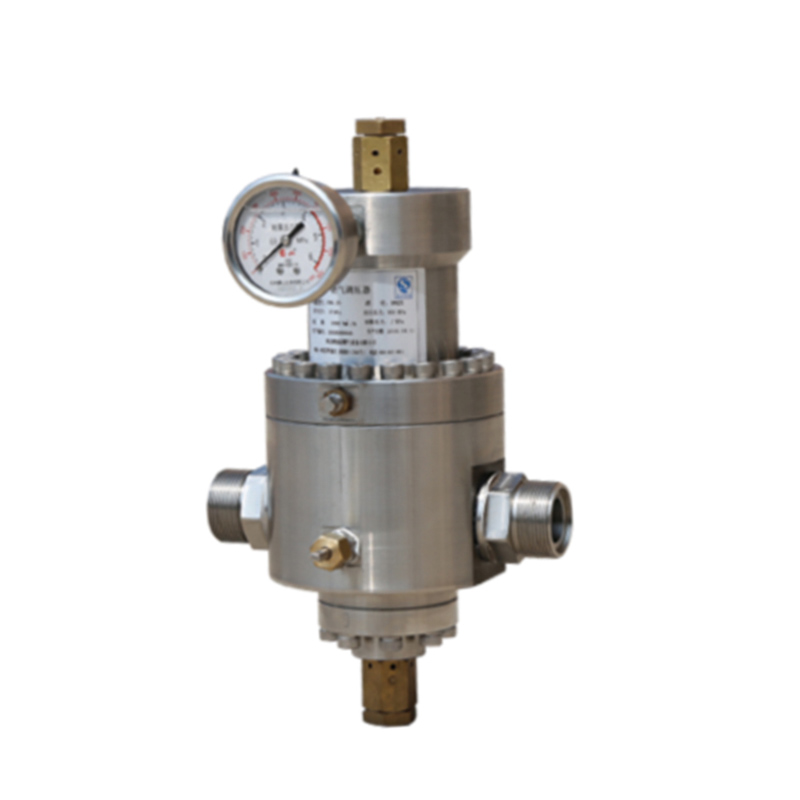
Dec . 05, 2024 07:47
Back to list
Safety Pressure Relief Valve for Gas Systems
Safety Relief Valves for Gas Systems Ensuring Safety and Efficiency
In the ever-evolving landscape of industrial processes, safety remains a paramount concern, particularly in systems handling gases. Among the essential components ensuring safety in such systems is the safety relief valve, known in Arabic as صمام تنفيس أمان الغاز. These valves play a critical role in preventing overpressure situations that can lead to hazardous incidents.
Definition and Functionality
A safety relief valve is a mechanical device that automatically releases gas or fluid when the pressure exceeds a predetermined limit. This function is crucial in preventing failure or catastrophic incidents in gas systems, which can otherwise result in leaks, explosions, or equipment damage. The design of these valves is essential; they must act quickly and reliably under extreme conditions to maintain system integrity.
Importance in Gas Systems
Gas systems—whether in residential, commercial, or industrial applications—can pose significant risks if not properly managed. The operation of gas appliances, pipelines, and storage tanks all involves pressure variations that can lead to dangerous situations. For example, if a gas pipeline experiences a sudden increase in pressure, a safety relief valve will open to enable the safe release of excess pressure, thereby protecting pipelines and reducing the risk of ruptures.
Moreover, in the context of regulatory compliance, the installation of safety relief valves is often mandated by safety standards and regulations. These regulations are aimed at safeguarding workers, the public, and the environment from the potential hazards of gas overpressure.
Types of Safety Relief Valves
There are several types of safety relief valves, each suited to different applications based on factors like gas type, system pressure, and temperature. Common types include
1. Spring-loaded relief valves These valves use a spring mechanism to hold the valve closed until the set pressure is exceeded. They are widely used in most gas applications due to their reliability and simplicity.
صمام تنفيس أمان الغاز

2. Pilot-operated relief valves These valves use system pressure to control the operation of a second valve, making them ideal for applications requiring high flow rates and precision.
3. Balanced relief valves They are designed to reduce the effect of back pressure on the valve’s operation, providing accurate pressure relief even in fluctuating pressure conditions.
Installation and Maintenance
Proper installation and regular maintenance of safety relief valves are crucial for optimal operation. During installation, it is vital to ensure that the valve is situated in a location where it can effectively respond to pressure changes. Additionally, the orientation and connection to the system must adhere to manufacturer specifications to avoid operational failures.
Regular maintenance checks are necessary to ensure these valves function correctly. This includes inspecting for signs of wear, corrosion, or blockages, as well as conducting routine tests to verify that the valves open at the designated pressure. Neglecting maintenance can lead to valve malfunction, which may compromise safety.
Innovations and Technologies
With advancements in technology, safety relief valves have become more sophisticated. Modern designs incorporate automated monitoring systems that provide real-time data on valve performance and system pressure. This integration of technology not only enhances safety but also improves operational efficiency.
Moreover, the development of materials resistant to extreme temperatures and corrosive environments has led to longer-lasting and more reliable valves. These innovations reflect the industry's commitment to continually improving safety standards while meeting the demands of modern gas systems.
Conclusion
In conclusion, safety relief valves are indispensable components in gas systems, serving as the first line of defense against hazardous overpressure situations. Their proper selection, installation, and maintenance are critical to ensuring the safety of industrial processes, protecting both personnel and equipment from potential dangers. As technology continues to evolve, these valves will undoubtedly become even more efficient and reliable, further enhancing the overall safety of gas operations. Ultimately, investing in quality safety relief valves is not just an operational necessity but a commitment to responsible practices in managing gas systems.
Latest news
-
Safety Valve Spring-Loaded Design Overpressure ProtectionNewsJul.25,2025
-
Precision Voltage Regulator AC5 Accuracy Grade PerformanceNewsJul.25,2025
-
Natural Gas Pressure Regulating Skid Industrial Pipeline ApplicationsNewsJul.25,2025
-
Natural Gas Filter Stainless Steel Mesh Element DesignNewsJul.25,2025
-
Gas Pressure Regulator Valve Direct-Acting Spring-Loaded DesignNewsJul.25,2025
-
Decompression Equipment Multi-Stage Heat Exchange System DesignNewsJul.25,2025

